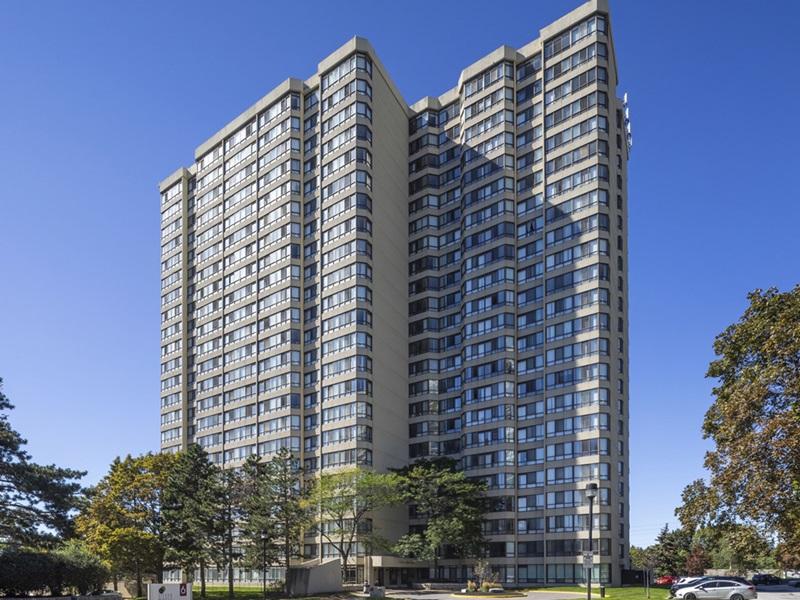
An edible garden at Desjardins’ 95 St. Clair Ave. W. building in Toronto. (Courtesy Colliers)
Imagine the perfect city. What would be in that city? How would the spaces and people interact?
Our cities are made up of buildings, so how we manage those buildings and how we curate the spaces around them plays a fundamental role in shaping urban and suburban centres.
Community building at commercial sites is also a key ingredient to enhancing asset value and building brands. We could have sites that are demonstrating high levels of operational excellence, but if those sites are unmotivating to work at, or boring to visit from a work/shop/play perspective, no one will want to work there and leasing will be challenging.
If, however, we incorporate community building into our management approach and create dynamic centres that draw in the building community and broader community, the building becomes differentiated and a destination that is well-positioned for expedient leasing.
Strong sites are dynamic sites. They are desirable places to work, shop, socialize and play — and incidentally, also help create stronger commercial nodes, communities and cities.
Ultimately this benefits real estate owners. Their asset performs better and the node performs better, each becoming stronger and more resilient.
Our cities are bursting with untapped potential
Canadian cities have often felt very functional. Compared to other global centres, our streetscapes are lined with mostly buildings and lack dynamic activation and community space.
Paris, New York and Tel Aviv by contrast are cities infused with gardens, artwork, architecture, music and attractions that inspire connection and community.
Canada’s cities are bursting with untapped opportunity when it comes to elevating our streetscapes. With the right kind of management and leadership, we can ignite these opportunities and elevate the value of our sites and spaces.
Community spaces are especially relevant now. Through the pandemic, many of us felt that the safest and most accessible places to find community were public outdoor spaces.
The lockdowns escalated our need for green spaces in urban areas.
Global cities are responding with new projects to address this need. In Paris, there is now a plan in place to transform the Champs-Elysees into a lush, pedestrianized space. Architect Philippe Chiambaretta of PCA-Stream says the project will bring together gardens and “form a green lung for the capital.”
In New York City, the Pier 55 project (now called “Little Island”) is envisioned to have open space with local plants, art installations and programming, with the intent of building something for the people that makes them happy.
There are several reasons to use our buildings and spaces to inspire joy. By activating our commercial spaces and cultivating community hubs, we:
– Differentiate our assets instead of having them be just like “the building next door,” improving leasing.
– Make the site a destination, increasing pedestrian traffic and supporting retail.
– Align to ESG priorities, supporting building sustainability certifications such as BOMA BEST, LEED and GRESB – this enhances credibility and signals to the market the type of landlord we are, attracting tenants and talent. People want to work at places that align to their values.
– Nurture pride in the building, asset and organization, building a brand through actions and not just words.
– Strengthen the asset and support the commercial node, making it more resilient and better-positioned to face disruption.
One way property managers can create community is by using “activators” that help people connect to the space, the community or even themselves, while nurturing engagement.
Edible and pollinator gardens
Who said commercial spaces need to be associated with grass or decorative landscaping? We have an opportunity to activate these spaces and introduce uses that are more dynamic and productive.
The Colliers Edible and Pollinator Garden program is designed to activate commercial sites, create new community spaces, support wellness, grow food for those that need it (including the bees), enhance urban biodiversity and support owners in achieving sustainability and ESG certifications.
At Desjardins‘ 95 St. Clair Ave. W., for example, the edible garden, coupled with the many other initiatives introduced by the team, helped to earn the asset the BOMA International TOBY award last year.
Pollinator garden programs (planting local plants) could save money and reduce landscaping costs. As pollinator plants are mostly perennial, there is no need to buy new plants every year for your building. The plants also cost less to maintain.
Converting as little as 10 per cent of grass to minimally disturbed local vegetation could lower the cost of lawn maintenance by more than 33 per cent, according to the David Suzuki Foundation.
This year, we have introduced 67 pollinator gardens at Colliers properties across the country, as well as Landscaped Edible Gardens in B.C., Alberta and Ontario.
Initiatives like these also support brand building, earning positive social media chatter and a sense of pride among workers at the building.
Public art builds a sense of community
Introducing art on site is also a great way to build community and improve a commercial area.

A light show celebrates the rebranding of the Arthur Erickson Place building in Vancouver. (Courtesy Colliers)
When Slate Asset Management commissioned a Phlegm mural on one of its Yonge and St. Clair buildings in Toronto, the move elevated the entire Yonge and St. Clair node. It also generated press coverage. The whole neighbourhood benefited, becoming more popular and busier — all good things for leasing.
KingSett Capital, Crestpoint Real Estate Investments Ltd. and Reliance Properties Ltd. recently rebranded their 1075 West Georgia asset in Vancouver to Arthur Erickson Place, a name highlighting the lauded Canadian architect. The rebranding was celebrated with a projected light show on the building’s façade on West Georgia Street. This was a beautiful gesture for the community and a creative way to activate the space.
Other art activation could include:
– parking lot activation;
– creative wayfinding;
– music performances;
– sculpture;
– interior artwork;
– immersive tech and augmented reality.
Property managers who think about their buildings and tenants as part of a community or ecosystem tend to break down boundaries and strengthen the commercial value of the entire area.
Regenerative programming
Sustainability is often referred to in a context of having a light footprint or leaving a place as it was when we arrived. To be “regenerative,” however, refers to leaving a place better than it was when we arrived.
For something to be truly regenerative, it must contribute to the well-being of the land, the species and the people of the place. Folding these things together is another great way that we can activate our spaces and establish community.
Our industry manages a lot of land.
Think of the collective impact we could have if we could be regenerative in the way we manage our spaces. We would elevate the space, asset, node, community and city.
We would all be more resilient.
Let’s move the dial
As we prepare for the return to our traditional business spaces, we have an opportunity to re-imagine the spaces we manage.
Let’s change our streetscapes one project at a time.
As one community member recently posted about our edible gardens at Desjardins’ 95 St. Clair Ave. W: “This is a perfect example of what all city blocks should look like. I hope one day it all looks like this.”
Imagine the possibilities.









